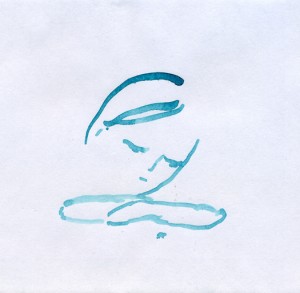Some Thoughts on Success: Is That All There Is?
Today I’m bringing back a post from my archive that explores why we may feel dissatisfied when we reach goals or achieve success, and how to find validation in the present moment. Enjoy!
A dear artist friend of mine recently finished a major commission. (SO excited for her and proud of her!) However, she mentioned she’s feeling a little let down after all the hard work she put in to get it finished on a tight deadline. She’s left with that feeling: Is that it?
It reminded me of a story I heard about an artist who achieved the distinction and recognition of being included in the Whitney biennial in her early 20s- an achievement that many contemporary American artists covet and aspire to. And yet, as she was riding the bus after the opening and she described an empty feeling and a similar thought. So that was it?
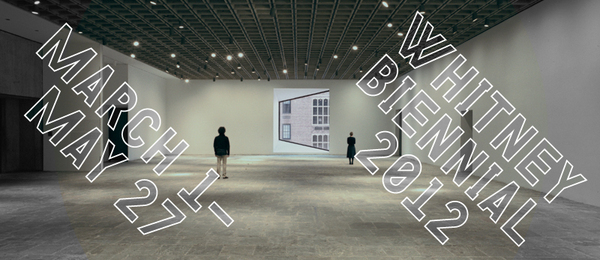
(Depending on where you are right now with your career you may be saying to yourself, If only I had such problems!)
But this kind of post-event let down brings up a question all of us face: Why are we doing this stuff in the first place? Because I’m sure many of you, like me, have these benchmarks – things we want to achieve because we think we’ll feel better when we get them.
I’ll be really happy when…
I get in that gallery.
Someone buys my work.
I get in the Whitney Biennial.
We might get so caught up in reaching that goal, completing a body of work or preparing for an exhibition that we forgot to feel happy with where we are right here and now. We may neglect to appreciate the present moment and our current situation.
I know in my own life I have had different dreams for my art. For instance, when I was in my 20s I always wanted to travel abroad for my art and have shows in different countries. I dreamed of exhibiting my work in museums. Now that I’ve achieved these things I want even bigger things. I want to be in bigger museums and better known venues. I compare myself to others who have achieved things I have not and I forget to appreciate all that I have created and all that I have achieved. This isn’t good enough. What’s next?
There are always things to appreciate no matter where you are in your career. It’s great to always be looking forward and to have big dreams visions and goals to help us move forward.
But actually the true joy and excitement is in the day-to-day!
We live only in the present moment.
Honestly, nothing else exists. Everything else is just dreams (the future) or memories (the past).
We got in this racket to enjoy the creative ride!
Every dream or goal is to inspire some kind of fun action that we can savor while we are in the moment.
Moment by moment by moment.
Contrary to popular myth it’s not about some kind of arrival, some pinnacle, some accomplishment.
Think for a moment about all the unfulfilled dreams and wishes you have currently for your creative or professional life. Now ponder what exactly is it that you hope you will feel when you’ve achieved this dream? Will you feel more successful? Will you feel happier because you’ll feel validated as an artist? Will you feel better when your work is recognized? Or that other people will take you more seriously as an artist?
Is there a way you can validate yourself right now? How can you appreciate or recognize yourself as you are in your current state?
Now, pause to savor this very moment. Breathe deeply. Feel your body against the chair, hear the hum of your computer. Receive the sounds around you near and far. The drip of the faucet, a bird, the neighbor’s thumping bass? Notice the colors and textures in your vicinity. Close your eyes and allow a faint smile to lighten your lips. Can you keep breathing and relaxing until you can touch on the exquisiteness and the preciousness of this present moment?
I’d love it if you’d share in the comments below something small (or big!) that you treasure and cherish in your current life. Be it the fact that you are blessed to have a box full of art supplies to make your work, or the fact that you have a space to work in or the fact that you have these gifts or skills or you have a family member or a friend or a teacher who is supportive of your endeavors.
Isn’t it wonderful that I have this connection to my creativity?
How great it is that I have had ideas and new ones keep flowing through me!
Isn’t it sweet that I am reading this article because I’m committed to supporting myself mentally, emotionally spiritually as a creative person?
Whatever it is, I invite you to appreciate that now and do not let go of your dreams!
Leave a Comment
What’s my opinion of your art?
I often have people write to me asking me to critique their work or give them pointers. I am always honored by these requests and that someone trusts me to give them feedback on their work.
However, this is not something I allow myself to do in this forum or on social media and here is why:
- I often don’t have a context for someone’s work and what they are making without knowing them first.
- I am not the best judge of what is worthwhile for you!
It is common to get to a point where you may feel like you need some technical training or new knowledge in order to grow. I encourage anyone that is at this place to find a local teacher or class where you can continue to learn, ask questions, and test materials. Having someone physically present to look at your work is important.
But when it comes to determining though if your work is “good” or whether you should keep going, this is something you must dig deep and answer for yourself. It is my strong belief that if you feel compelled to make something, then that is enough! It is not for anyone to judge how you spend your time and what is important. Making art and living the life of an artist is about sticking with it and being consistent. It’s about showing up for yourself.
As a teacher, what I want you to take away is the notion that YOU decide what matters. What anyone else thinks is irrelevant. At the end of the day what matters is that your art gives you joy.
Help me keep the conversation going about this. Share your thoughts with me in the comments section and what we can do to give each other a boost!
Leave a Comment
Why you MUST meditate
I know it’s SO annoying someone telling you what to do!
And I don’t, usually, but as the New Year kicks off, a lot of people are looking to adopt new habits. I want to share with you THE SINGLE MOST ESSENTIAL HABIT I have ever developed and how incredibly helpful it can be to you not only as an artist but as a happy human being.
For those of you that know me or have followed my blog for awhile, you know that I meditate daily. It helps keep me centered and brings me incredible peace during easier times and steadiness during challenging or painful times.
The nature of the superficial mind is often scattered, judgmental, fearful, worried and anxious. Without training these negative thinking patterns can become ingrained. We actually believe what our mind tells us without the ability to discern. Often, we turn those thoughts against ourselves. But when we train the mind, we can better connect with our deeper selves.
Peace is an innate part of our inner nature, but we must practice regularly to be able to put some distance between ourselves and our often negative thoughts. I recommend to starting small. Five minutes is plenty for a beginner start. Aim to increase gradually to a daily practice of 15 – 20 minutes. There are many resources on meditation on the web or apps you can get for your phone to help you get started. Please be patient. It does take time for most of us. It took me some years, but now I can easily drop into calm and centeredness even in very challenging situations.
Please let us know in the comments – Have you ever tried meditation? Was it hard for you? If you have an established practice, please let us know what it has done for you.
Leave a Comment
What’s So Great About Perfect?
Just what exactly is “perfect” and where do we formulate our notion of “perfection”?
I believe that perfectionism is the root of many an artist’s block.
I’ll never be good enough.
If I can’t do it as well as ____________, why try?
I’m not sure my idea is worthwhile.
What if I fail?
My project could never reach the beauty and perfection of the idea in my head.
We often talk ourselves out of doing something before we even get the chance to start.
I am reminded of something painter Agnes Martin once said:
“We cannot make anything perfectly but with inner contemplation of perfection, we can suggest it.”
I made this video because I’d like to invite you to pick up the reins of a project or piece that is waiting in the wings for the perfect time, the perfect place, materials, amount of money, the perfection of your skills, or whatever notion of perfection is preventing you from diving in.
See what happens.
And let us know, OK?
Leave a Comment
Art & Meditation: Transforming Barriers to Creativity
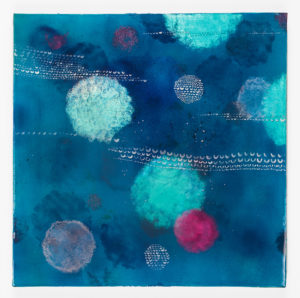
In my last blog post, I introduced you to the idea of including meditation into your daily life as a way to begin tackling those negative internal voices that so often cripple us as artists. I know that a lot of people may be skeptical of how helpful a meditation practice can be, but the benefits of becoming more aware can only serve to help us grow as artists.
A couple of years into my meditation practice, when I was still struggling in the studio with insecurities and self-criticism, I remember a big breakthrough. I was working on a very large painting. It was my largest painting to date and I had invested a lot of time and money making it. But the piece felt flat and unpainterly to me.
I remember one day looking at it and it felt totally unsolvable. I just hated the piece. And I couldn’t think of how to solve it. I was feeling frustrated and discouraged and because I had spent so much on the materials, the thought of abandoning it didn’t seem a viable option. For some reason that day, I had the presence of mind to just stop and sit with it. Not try to think it through or solve it, just be present with it, as I would in meditation. And in that silence, I got an idea for something to try. Since it was about the worst painting I had ever made, I had nothing to lose. When I tried my new idea, I was completely delighted with the results and full of exhilaration and fresh energy for the piece. I broke through what I call “the Wall.”
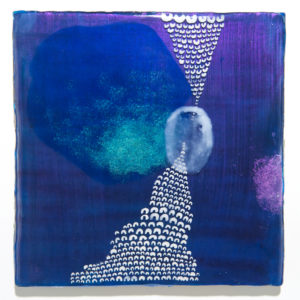
“The Wall” seems to happen over and over in creative work. It’s when you are at an impasse. You’ve already invested quite a bit into the project. So it definitely feels like more is at stake. It can feel like there’s no way out, no solution.
Sometimes the best way through is to do “nothing.” By nothing I mean to empty oneself and become receptive. Meditation can teach us how to do that.
A daily practice of meditation teaches us to discern between mind chatter and our inner wisdom. It’s easy to get caught up in our thoughts, circling over and over with various possibilities and choices without gaining clarity. Without awareness, our thoughts drive us. Having your thoughts driving you is like being dragged around behind a wild unruly stallion. I am inviting you to learn how to get back in the saddle, and guide your mind by developing a respectful, cooperative relationship with it. When we can get some distance between our self and our thoughts, we can choose our thoughts.
What is remarkable is that when we shine the light of awareness on a problem without identifying with it, this problem tends to become less daunting. In our calm awareness, insights and solutions naturally arise. We may be inspired to action, but without the sense of willfulness and effort we may have formerly applied to similar situations. For example, in the past when I was frustrated with a painting, I might have pushed on through, painting over and over it even though I knew it wasn’t going well and I wasn’t enjoying it. I would apply my willfulness and work ethic, hoping for some kind of resolution. And sometimes that approach does work. But these days, when I am at an impasse, I am more likely to stop, sit quietly, close my eyes and go inward, allowing ideas to enter my head. It never takes long, and the most unexpected and delightful solutions present themselves.
What do you do to break through blocks and barriers to creativity or move past what I call “the Wall” in your own practice? I invite you share your thoughts in the comments below.
Leave a Comment
Meditation and the Studio: Becoming Aware
It may surprise you to learn that I wasn’t a star pupil in art school. Not one of those students who carried those black, hard-backed sketchbooks everywhere, bursting with sketches, paintings and collages. Not the kind of art student who spent every waking hour making things. I was a diligent, attentive student. I did the assigned work, attended every class and loved it all. But when I started, I hadn’t the first clue how to turn out original work.

After graduation, I went through a difficult period in my creative life. I knew I wanted to devote my life to making art. But crushing self-doubts and critical voices plagued me every time I tried to work in the studio. I showed up to the studio regularly and managed to get work done, but I suffered from inexplicable fatigue due to the inner emotional stress of these critical voices. I sometimes grew distracted and unfocused. I sought out self-help books and groups for creative people, and slowly and subtly things began to change.
In my work as a teacher and artist for over thirty years, I know of many artists can relate to this feeling of paralysis or being stuck. For me, turning to mindfulness and meditation helped me make that shift to becoming the artist I am today. A lot of people believe that meditation or mindfulness is about reaching some exalted state, but it is actually about learning to be present.
When we practice meditation we naturally become more aware. Aware of our thoughts, our unconscious habits, the feelings and thoughts of the people around us, our impact on others. And the longer we practice, the more we notice. We notice subtle things that were always there – we just couldn’t see them before. Sort of like someone whose fuzzy vision becomes clearer with a new pair of glasses.
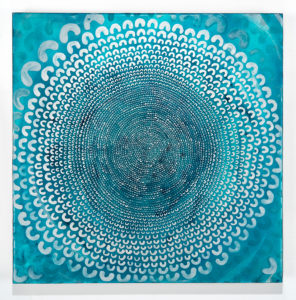
This type of deep noticing can have a profound impact on our creative work. As Paul Valéry put it: “To see is to forget the name of what one is seeing.” By being fully present with what we are creating, we can move beyond preconceptions and habits and encounter the work afresh.
If you’ve never spent time meditating before, you may find your mind to be a very messy place. Most of us have habits and patterns of thought that we unwittingly developed in our youth by simply imitating the patterns of thought of those around us. Patterned thoughts become like grooves in our brain – neural pathways – that can create habits of self-criticism, fear, doubt, cynicism, pessimism or worry. We scarcely notice them because they are so ingrained in us. And if we don’t notice them, we can hardly be aware that it is those habits or patterns of thought that are driving the circumstances around us.
If you are new to meditation, here are a few simple steps to experiment with it:
- Set aside 5 minutes each morning. As early as possible upon arising is easiest because your mind is still fresh and you don’t have as much resistance to the idea. (I’m too busy, I don’t feel like it, it’s too hard.)
- Find a comfortable and pleasant place to sit. One where you can sit in the exact spot every day.
- And if you have a smartphone, I suggest setting a timer with a gentle ring so your mind doesn’t need to be preoccupied with how long five minutes exactly is.
- Settle in: Ensure that your posture us upright, your chin ever so slightly turned down to elongate the back of your neck. Allow your shoulders to be comfortably loose and relaxed, with your shoulder blades on the same plan as your spine, rather than hunched forward.
- Gently close your eyes and just notice that breath. Pay attention as it fills your lungs quite easily and naturally, and then as it is expelled just as easily through your nostrils.
Thoughts will arise. About whether you remembered to take out the garbage last night, or the first appointment of the day, or that annoying thing your co-worker said yesterday. But you are not going to engage with those thoughts just now. You are going to notice the warmth of the breath as it gently flows in and out. And how your jaw has naturally unclenched and how every muscle is gently melting, releasing habitual tension. And the thoughts may come back: How long has it been now? Surely five minutes is up. I can’t sit here doing nothing! I have so much to do today! And then like a little child who has wandered off, you will gently take your mind by the hand and lead it back to the present moment.
If it helps, you can count your breaths. But just stay with the breath. And without noticing it, you have actually drifted into deep connection. You are not thinking. Then you notice that you are not thinking, and now you are thinking again. And so, you go back to your breath. Such is the task of a meditator. Like trying to take a knot out of a tiny thread with a needle. But hang with it. Please. It gets easier. Because you will untangle that knot and then that tiny thread will stretch out before you free of its knots. Before you know it, there is no thread at all.
Do you currently practice meditation in your daily life? Share your experiences in the comments below!
Leave a Comment

